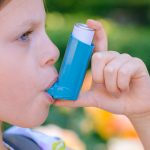
Every day, millions of people must take one or more pills to control their blood pressure and reduce their risk for heart attack or stroke, but if new research pans out, some may be able to scrap their pills for a twice-yearly shot with the same benefits. Given as a shot every six months, zilebesiran suppresses the gene that produces a hormone called angiotensin that causes blood vessels to contract. This contraction causes blood pressure to rise. The new shot isn’t ready for prime time yet, but phase 2 trials are underway. “This approach offers the potential for sustained reduction in blood pressure that may obviate the need for daily pills in select patients and may help overcome some of the challenges with adherence that compromise our ability to effectively treat high blood pressure,” said lead author Dr. Akshay Suvas Desai, medical director of the Cardiomyopathy and Heart Failure Program at Brigham and Women’s Hospital in Boston. Many people with high blood pressure miss or skip pills because they are overwhelmed and don’t necessarily feel sick, among other reasons. For the study, 107 people with high blood pressure received either varying doses of zilebesiran as a shot, or a placebo injection, and were then followed for 24 weeks. The researchers also looked at the effect of the 800-mg dose of zilebesiran on blood pressure when… read on > read on >


















